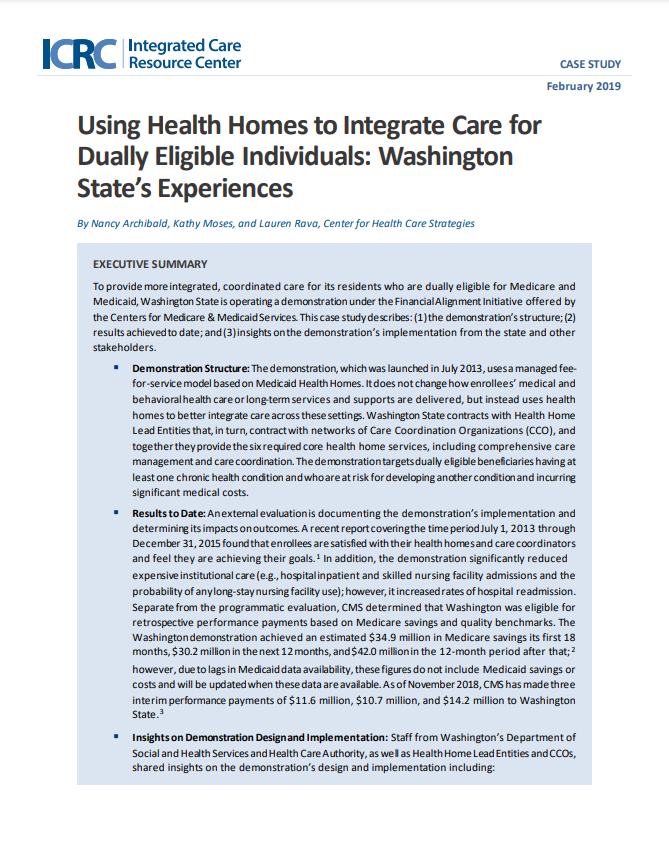Headline
Case study explores the unique structure of Washington State’s demonstration under the federal Financial Alignment Initiative, including summary of results to date.
Context
This case study explores Washington State's managed fee-for-service (MFFS) demonstration under the federal Financial Alignment Initiative, which aims to enhance integrated care for residents dually eligible for Medicare and Medicaid. The MFFS model utilizes Medicaid Health Homes, employing Health Home Lead Entities who contract with Care Coordination Organizations to deliver comprehensive care management and coordination services. The demonstration maintains the existing delivery methods for enrollees' primary and acute care, behavioral health care, and long-term services and supports while leveraging health homes as a conduit to enhance the integration of care across these settings.
Findings
A program evaluation conducted from 2013 to 2015 indicated high enrollee satisfaction and reduced institutional care, but increased hospital readmissions. Washington also achieved substantial Medicare savings and met quality benchmarks, which qualified the state to receive performance payments. Insights into the demonstration's design and implementation from project stakeholders highlight the importance of stakeholder engagement, targeting higher-risk groups, allocating necessary resources for beneficiary engagement, using health action plans to improve outcomes, structuring health home payments for incentives, and securing financial support for long-term sustainability.
Takeaways
Washington State's MFFS demonstration serves as a notable example of effective care coordination for dually eligible individuals with chronic conditions. This case study offers valuable insights for state Medicaid agencies, especially those aiming to integrate care for dually eligible beneficiaries within non-capitated delivery systems.



